
New Orleans vs Houston: Which Southern City Offers the Best Food, Culture, and Nightlife in 2025
New Orleans and Houston are two iconic cities in the American South, each with its own distinct personality and charm. These major urban centers draw millions of visitors each year looking to experience their unique cultures, cuisines, and attractions.
Most tourists seeking a memorable vacation will find New Orleans a better choice. The French Quarter offers more must-see attractions and cultural experiences than Houston. The historic architecture, live jazz scene, and world-famous Creole cooking create an atmosphere that can’t be found anywhere else in the United States.
Houston shines as a modern metropolis with excellent museums, family-friendly activities, and diverse dining options. The city’s lower cost of living and extensive public healthcare system make it more practical for long-term stays or families with children. Its warmer climate, with temperatures averaging 4.3°C higher than New Orleans, appeals to sun-seekers year-round.
Contents
- Historical Overview
- Foundation and Growth
- Cultural Significance
- Geography and Climate
- Location and Landscape
- Weather Patterns
- Demographics and Population Density
- Economic Landscape
- Job Market
- Industry Sectors
- Cost of Living Comparison
- Housing and Real Estate
- Transportation Costs
- Food and Dining Expenses
- Healthcare and Education
- Hospitals and Medical Facilities
- Schools and Universities
- Lifestyle and Cultural Offerings
- Food and Cuisine
- Arts and Entertainment
- Nightlife and Leisure Activities
- Shopping Experience
- Public Safety and Crime
- Transportation and Traffic
- Public Transit Systems
- Traffic Congestion
- Frequently Asked Questions
- What are the key differences in the cost of living between New Orleans and Houston?
- Which city has a higher population, New Orleans or Houston?
- How do the defense strategies of Houston and New Orleans football teams compare?
- Can you compare the climate differences between Houston and New Orleans in terms of humidity and weather patterns?
- What makes Houston a popular destination compared to other cities like New Orleans?
- How do the cultural and entertainment scenes in New Orleans differ from those in Houston?
- More Travel Guides
Historical Overview
These two major Southern cities share fascinating histories shaped by diverse cultural influences, immigration waves, and economic transformations over the centuries.
Foundation and Growth
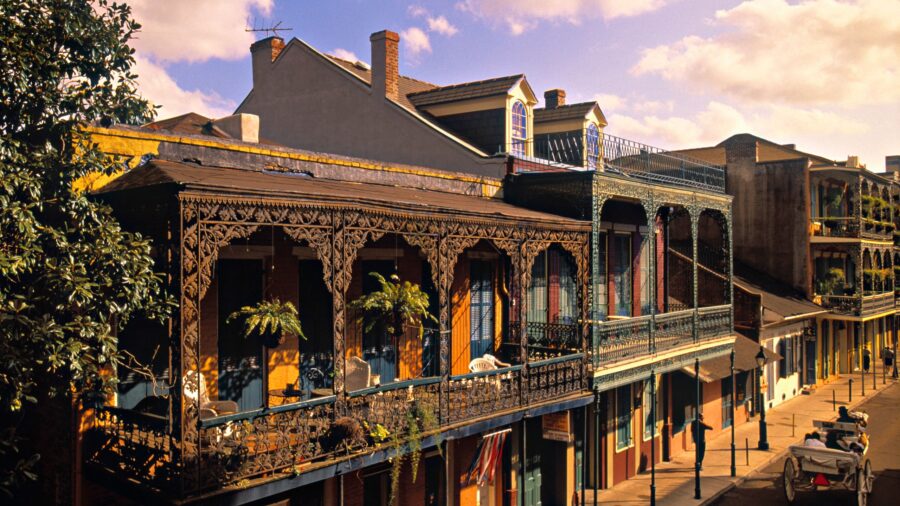
New Orleans sprang to life in 1718 as a French colonial outpost, making it significantly older than Houston. The city’s strategic location on the Mississippi River helped it grow into a crucial port for trade and commerce in the 1800s. Its population boomed as French, Spanish, African, and Caribbean influences merged to create its unique identity.
Houston’s story began in 1836 when the Allen brothers founded it near Buffalo Bayou. The city grew more slowly at first but exploded after oil was discovered at Spindletop in 1901. The population surged as people rushed to Texas for oil jobs.
Cultural Significance
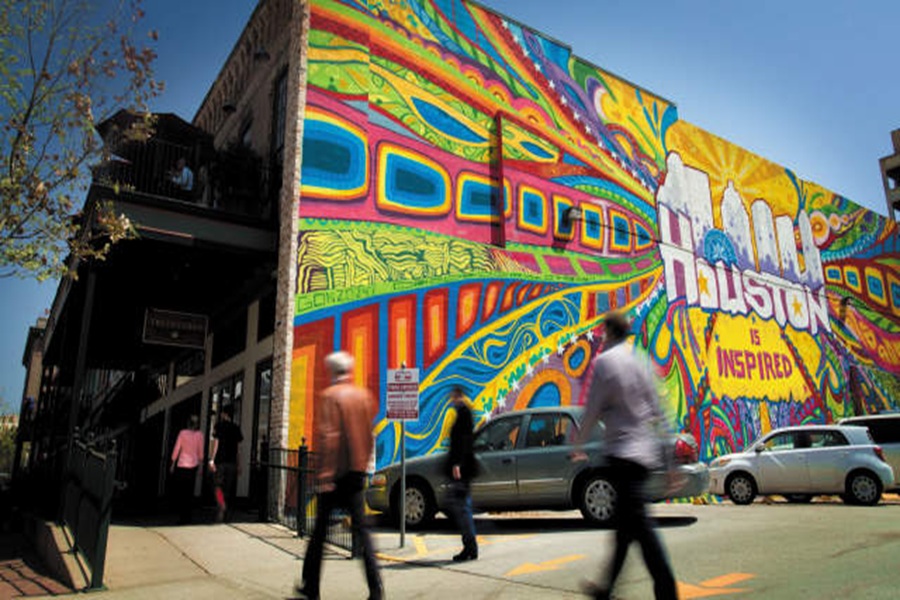
New Orleans developed its distinct culture through a blend of French, Spanish, and African traditions. The city became the birthplace of jazz and famous for its unique Creole cuisine. Its architecture reflects French and Spanish colonial styles, especially in the French Quarter.
Houston’s culture grew from its mix of Southern, Western, and Mexican influences. The city’s rapid growth in the 20th century brought waves of immigrants who added their own traditions to the mix. Today, it’s one of America’s most diverse cities.
The city embraced space exploration when NASA opened the Johnson Space Center in 1961. This helped transform Houston from an oil town into a modern tech hub.
Geography and Climate
New Orleans and Houston share some similarities as major Gulf Coast cities, but their landscapes and weather patterns show key differences. Both cities face challenges from heavy rainfall and flooding, though New Orleans sees more annual precipitation.
Location and Landscape

New Orleans sits below sea level between Lake Pontchartrain and the Mississippi River. The city’s unique bowl-shaped geography makes it extra vulnerable to flooding.
Houston spreads across a flat coastal plain with several bayous running through it. The city’s elevation ranges from 0 to 125 feet above sea level, giving it better natural drainage than New Orleans.
Both cities feature lush green spaces and waterways, though Houston covers a much larger land area – nearly 700 square miles compared to New Orleans’ roughly 350 square miles.
Weather Patterns

The two cities share a humid subtropical climate with hot summers and mild winters. Summer highs reach 93°F in Houston and 92°F in New Orleans.
New Orleans gets more rain – about 63.5 inches yearly compared to Houston’s 53 inches. Both cities see intense thunderstorms and face hurricane risks.
New Orleans enjoys slightly more sunshine with 216 sunny days per year. Houston sees about 204 sunny days annually.
Winter temperatures stay mild in both places. January lows drop to 43°F in Houston and 45°F in New Orleans. Snow is extremely rare in either city.
Demographics and Population Density
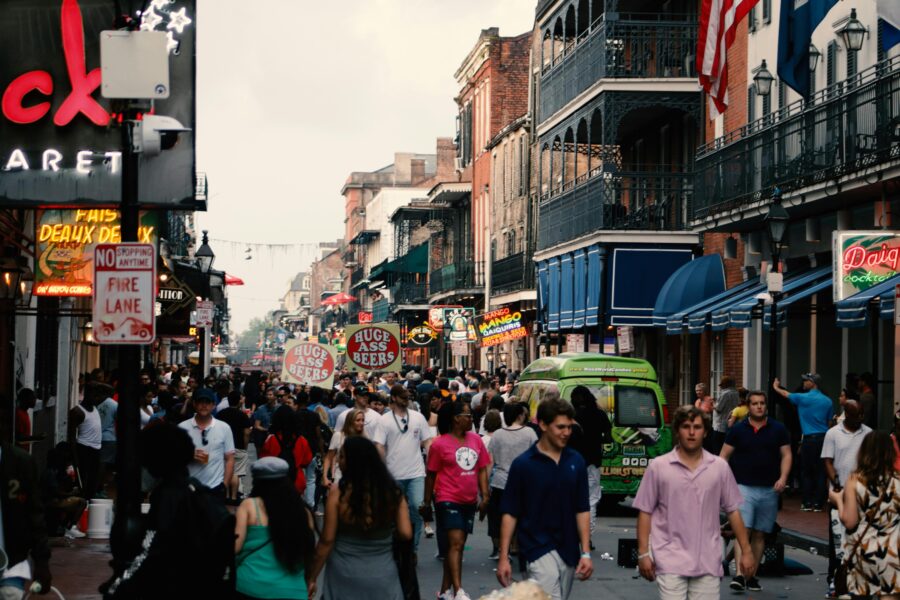
Houston stands as the larger city with a significantly bigger population than New Orleans. The two cities show interesting contrasts in their demographic makeup.
The population density between these cities tells an interesting story. While many assume New Orleans would be more cramped, both cities have similar density levels in their urban cores.
Age differences stand out between these Southern cities:
- New Orleans residents are typically 4 years older
- Houston has a younger median age
- Both cities maintain diverse age ranges
Marriage rates differ quite a bit in these cities. Houston shows higher marriage rates, with residents 38% more likely to be married compared to New Orleans. This affects the family structures and community dynamics in each city.
Both cities embrace their multicultural roots. You’ll find vibrant communities from various backgrounds shaping the unique character of each place. The mix creates distinct neighborhood flavors and cultural experiences.
The family makeup varies between the cities. Houston tends to have more traditional family units, while New Orleans features more single-person households and non-traditional family structures.
These population patterns shape daily life in both places. Each city maintains its own special charm while supporting different lifestyle needs and community structures.
Economic Landscape
New Orleans and Houston show stark economic differences in their job markets and business sectors. The cities have unique economic strengths, income levels, and employment patterns that shape life for their residents.
Job Market
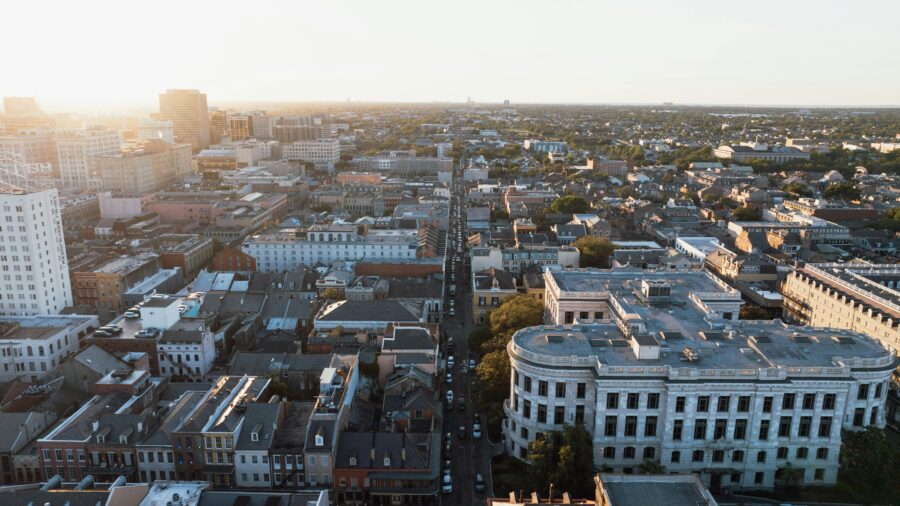
Houston maintains a stronger employment outlook with an 8% unemployment rate compared to New Orleans’ 11%. Workers in Houston earn notably higher wages – household incomes are 23% higher than in New Orleans.
The job scene in Houston offers more stability and growth potential. Many big companies have offices there, creating lots of professional opportunities.
New Orleans faces some tough job market challenges. The city ranks low in fiscal health – 70th out of 75 major U.S. cities. This impacts local job creation and economic growth.
Industry Sectors

Houston’s economy centers on energy, healthcare, and aerospace. The city hosts many Fortune 500 company headquarters, creating a diverse business landscape.
New Orleans builds its economy on tourism, maritime trade, and healthcare. The Port of New Orleans plays a key role in the local economy.
Both cities have growing tech sectors, but Houston attracts more major tech companies and startups. The energy sector gives Houston an edge in attracting international business.
Tourism remains New Orleans’ strongest industry. While this brings steady income, it makes the economy more vulnerable to travel industry ups and downs.
Cost of Living Comparison
Living costs between New Orleans and Houston show notable differences in key areas like housing, getting around town, and eating out. Each city offers unique financial advantages for residents.
Housing and Real Estate

The housing market in Houston tends to be more expensive than New Orleans. A standard one-bedroom apartment in Houston costs about $1,200 monthly, while similar units in New Orleans average $1,000.
Property taxes hit harder in Houston, with rates around 2.1% compared to New Orleans’ 1.8%. This adds up fast for homeowners.
New Orleans has more historic homes and unique architecture, but they often need extra maintenance. Houston offers more new construction and master-planned communities.
Transportation Costs
Gas prices typically run 15-20 cents lower per gallon in Houston than in New Orleans. That savings adds up for daily commuters.
Public transit costs less in New Orleans, with a monthly pass around $55 compared to Houston’s $85. The smaller size of New Orleans makes it easier to get around without a car.
Parking fees sting more in New Orleans’ tourist areas, often $20+ daily. Houston has more free parking options, especially in suburban areas.
Food and Dining Expenses
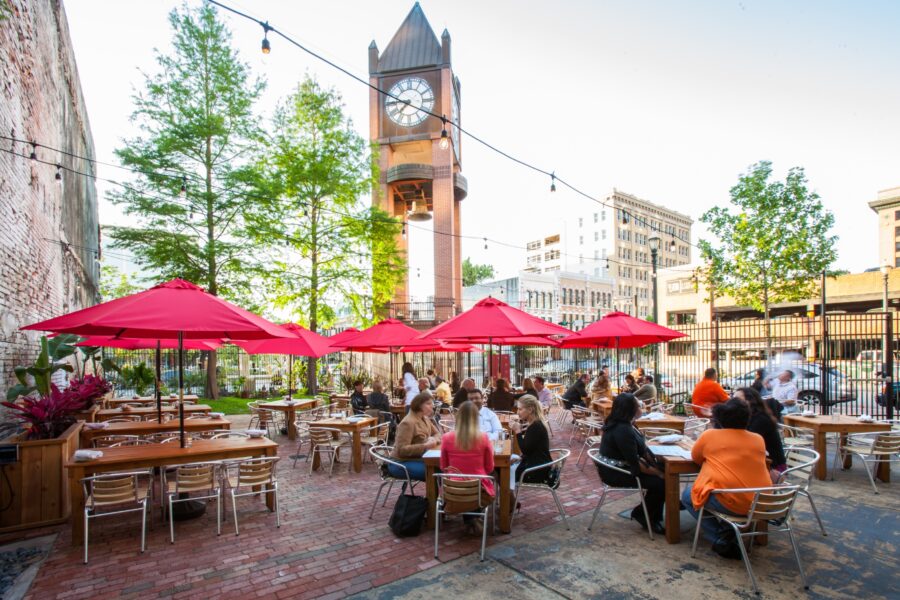
Grocery prices run about 3% higher in Houston than New Orleans. A gallon of milk costs about $3.50 in Houston versus $3.20 in New Orleans.
Restaurant meals cost more in New Orleans, especially in tourist spots. A casual dinner for two averages $60 in New Orleans compared to $50 in Houston.
Fast food and chain restaurants tend to be cheaper in Houston. Local food trucks and street vendors offer better deals in New Orleans.
Fresh seafood costs less in New Orleans thanks to its location near the Gulf. Houston makes up for it with lower prices on Tex-Mex ingredients and international foods.
Healthcare and Education
New Orleans and Houston both offer major medical centers and diverse educational options. Healthcare standards and school quality differ between the cities, with each having unique strengths.
Hospitals and Medical Facilities

Houston’s Texas Medical Center stands as the world’s largest medical complex, with over 50 medical institutions. The city features top-ranked hospitals like MD Anderson Cancer Center and Houston Methodist Hospital. Access to specialists and cutting-edge treatments makes Houston a healthcare destination.
The medical scene in New Orleans centers around Tulane Medical Center and Ochsner Health System. These facilities provide good care, but the city has fewer specialists than Houston. Water quality scores show New Orleans at 40 out of 100, while Houston rates 37.
Each city faces air quality challenges. New Orleans scores 51.8 out of 100, slightly better than Houston’s 49.1. Both fall below the U.S. average of 58.4.
Schools and Universities

New Orleans spends more per student than Houston, investing 59.3% more in each child’s education. The smaller class sizes in New Orleans mean more individual attention – the student-teacher ratio is 11.6% lower than Houston.
Houston’s higher education shines with the University of Houston system and Rice University. These schools attract students from across the globe for engineering and research programs.
New Orleans brings its own educational charm with Tulane University and Loyola University. The city’s schools often incorporate local culture and history into their programs.
Both cities maintain strong community college systems. These offer affordable paths to degrees and technical training for local jobs.
Lifestyle and Cultural Offerings
Both cities offer unique cultural experiences that shape daily life for locals and visitors. Each has distinct flavors, entertainment options, and ways to spend free time that make them special.
Food and Cuisine

New Orleans stands out with its famous Creole and Cajun cooking. Local spots serve up jambalaya, gumbo, and po’ boys that you won’t find anywhere else. The city’s restaurants blend French, African, and Caribbean influences to create unique dishes.
Houston’s food scene reflects its diverse population. You’ll find amazing Vietnamese pho, Texas BBQ, and Tex-Mex restaurants throughout the city. The city has over 10,000 restaurants serving food from more than 70 countries.
Street food and casual dining shine in both cities. New Orleans has food carts selling beignets and crawfish. Houston’s food trucks offer everything from tacos to fusion cuisine.
Arts and Entertainment

New Orleans buzzes with live jazz on Frenchmen Street. Musicians play in clubs, on streets, and in Jackson Square daily. The city’s many museums focus on jazz history, voodoo culture, and Southern art.
Houston boasts world-class venues like:
- The Museum of Fine Arts
- The Theater District
- Space Center Houston
- Houston Symphony Orchestra
Both cities host major festivals. New Orleans has Mardi Gras and Jazz Fest. Houston celebrates with its Livestock Show and Rodeo plus numerous cultural festivals.
Nightlife and Leisure Activities
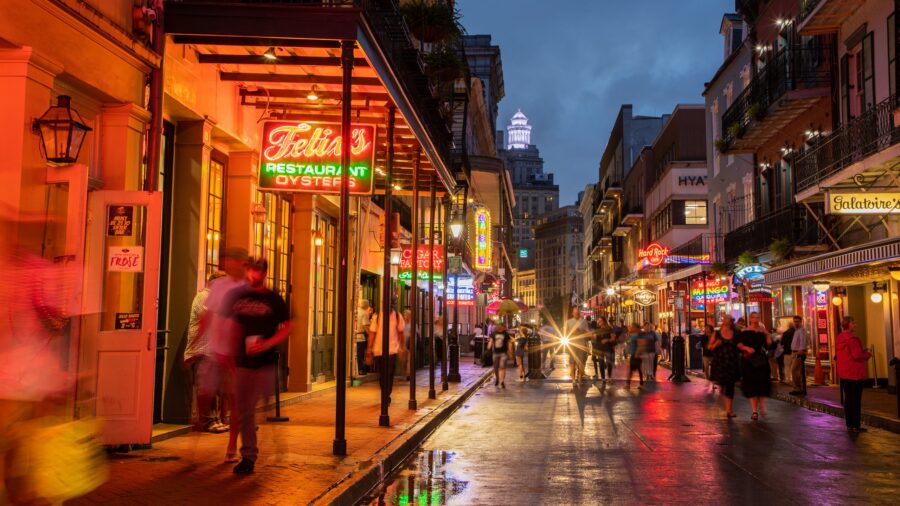
New Orleans’ French Quarter comes alive at night. Bourbon Street fills with music from dozens of bars and clubs. People can carry drinks outside in “go cups” while exploring.
Houston’s nightlife spreads across several districts:
- Midtown for trendy bars
- Downtown for upscale clubs
- Washington Avenue for pub crawls
- Montrose for quirky lounges
Each city offers different outdoor spaces. New Orleans has City Park and the Mississippi Riverfront. Houston features Memorial Park and Buffalo Bayou for walking, biking, and relaxing.
Shopping Experience
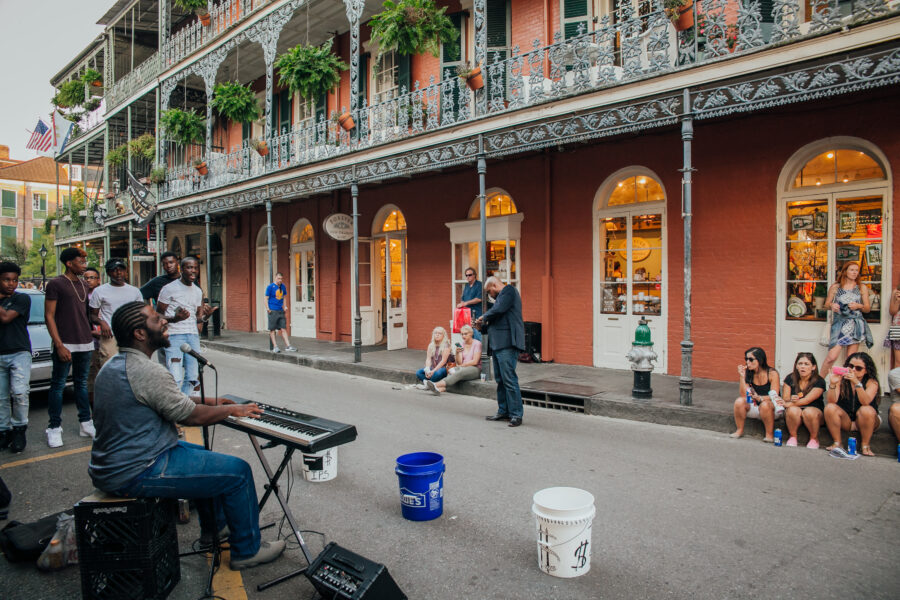
New Orleans offers unique shopping in the French Quarter’s antique stores and art galleries. Royal Street features local craftwork and vintage items. The French Market has food vendors and souvenirs.
Houston’s shopping includes:
- The Galleria (upscale mall)
- Rice Village (boutique district)
- 19th Street in Heights (local shops)
- River Oaks District (luxury brands)
Both cities have farmers markets. New Orleans’ Crescent City Farmers Market sells local produce and seafood. Houston’s urban markets offer fresh food and artisanal goods in several neighborhoods.
Public Safety and Crime
Both New Orleans and Houston have higher crime rates than the national average. New Orleans has a violent crime rate of 49.1, while Houston sits at 50.4, compared to the U.S. average of 22.7.
Property crime tells a different story. Houston faces more challenges with a rate of 63.2, while New Orleans comes in at 56.8. The national average is 35.4.
Both cities deal with safety concerns in specific neighborhoods. Like many big cities, crime tends to cluster in certain areas while other districts remain quite safe for residents and visitors.
Crime Rate Comparison (2025)
| Type | New Orleans | Houston | U.S. Average |
|---|---|---|---|
| Violent Crime | 49.1 | 50.4 | 22.7 |
| Property Crime | 56.8 | 63.2 | 35.4 |
Smart travelers can stay safe in either city by taking basic precautions. These include:
- Staying aware of surroundings
- Avoiding walking alone at night
- Keeping valuables secure
- Sticking to well-lit, populated areas
Both cities have police departments working to improve public safety. They use community policing and new technologies to help protect residents and tourists.
Transportation and Traffic
Getting around these major Gulf Coast cities can be quite different. While Houston relies heavily on cars and highways, New Orleans offers more diverse transit options and generally lighter traffic volumes.
Public Transit Systems
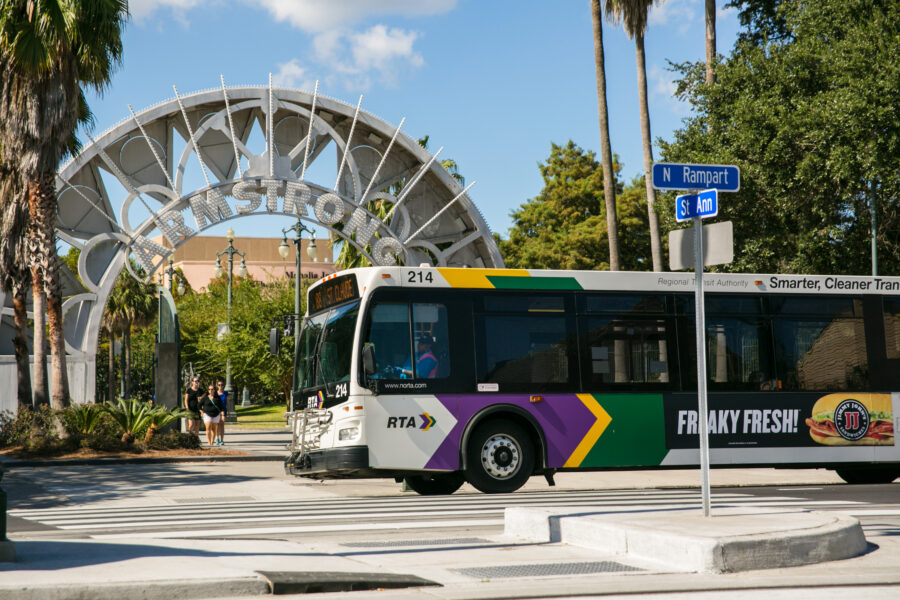
The Regional Transit Authority (RTA) in New Orleans runs the city’s iconic streetcars, which serve popular areas like the French Quarter and Garden District. These historic trolleys aren’t just for tourists – locals use them daily. The city also operates a decent bus network.
Houston’s METRO system covers a larger area with buses and light rail. The light rail system has expanded in recent years, though it’s still limited compared to other big cities. The bus network is extensive but can be slow due to the city’s sprawl.
Traffic Congestion
Houston’s traffic ranks among the worst in America. The average commute takes about 42 minutes, with frequent delays on major highways like I-10 and I-45. Rush hour traffic often starts before 6 AM and can last until 7 PM.
New Orleans drivers face shorter commutes, averaging just 29 minutes. The compact size of the city’s core helps reduce traffic issues.
The city’s grid layout makes navigation simpler than Houston’s complex highway system. More New Orleans residents work from home too – about 19% more than in Houston.
Traffic pain points:
- Houston sees more stop-and-start traffic
- New Orleans has fewer major highways to navigate
- Houston’s rush hours last longer
- New Orleans benefits from a more compact layout
Frequently Asked Questions
Both Houston and Texas cities offer unique experiences, differences in living costs, distinct weather patterns, and rich cultural scenes that shape daily life for residents and tourists.
What are the key differences in the cost of living between New Orleans and Houston?
New Orleans has a 6.1% higher cost of living than Houston. A person needs to earn $63,688 in New Orleans to maintain the same living standard as in Houston.
Salaries in New Orleans tend to be 3.8% lower than Houston, which affects purchasing power.
Which city has a higher population, New Orleans or Houston?
Houston ranks as the 4th largest city in America with over 2.3 million residents.
New Orleans has a much smaller population of around 380,000 people, making it feel more like a big town than a major metropolis.
How do the defense strategies of Houston and New Orleans football teams compare?
The Houston Texans focus on aggressive pass rushing and man coverage schemes.
The New Orleans Saints traditionally emphasize zone coverage and rely on their defensive line to create pressure.
Can you compare the climate differences between Houston and New Orleans in terms of humidity and weather patterns?
Both cities experience high humidity levels and hot summers. New Orleans faces more book sightseeing tours during hurricane season.
Houston deals with fewer tropical storms but experiences more extreme temperature swings throughout the year.
What makes Houston a popular destination compared to other cities like New Orleans?
Houston attracts visitors with its world-class museums, search flights to Space Center Houston, and diverse dining scene.
The city offers excellent shopping, professional sports teams, and family-friendly attractions.
How do the cultural and entertainment scenes in New Orleans differ from those in Houston?
Jazz clubs, street performers, and historic French Quarter architecture buzz in New Orleans. The city’s fun activities center around music, food, and festivals. Meanwhile, Houston’s scene focuses more on contemporary arts, theater districts, and modern entertainment venues.
The Big Easy maintains stronger ties to its French and Creole heritage, while Houston embraces a more modern, multicultural identity.


